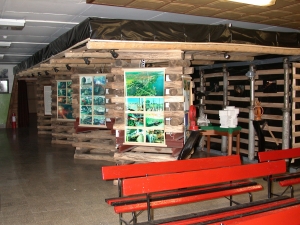The town has excellent opportunities to be utilized in tourism, as it is easily accessible and it is situated near the motorway and the Vienna-Budapest axis. Every settlement is proud of its past. This is true of Oroszlány, too. In the course of centuries many generations have found it a suitable place to settle down, where they can find beautiful natural surroundings, where people of different nationalities live together in peace respecting each other. In 1938 it was a small village of 1,500 inhabitants, but the exploration of good quality coal-fields here brought huge changes in the life of the village. The sleepy little village has become a town of 21,000 inhabitants by now and mining and energy industry have made it a natural centre of the small region.
Oroszlány, which celebrated the 50th anniversary of becoming a town in 2004, has a lot of intellectual and cultural values. Here you can find the last deepworking mine of Hungary, which is still working, the Márkushegyi plant. The Industrial Park of Oroszlány was officially opened in 1997. The most outstanding sight of the town is the Majki monument complex, the monastery of the dumb friars of Kamaldul, which has tens of thousands of visitors every year. The habitable closed-plan hermitages built in Baroque style with the church tower in the middle offer a special experience to the visitors. But the Vértes hills have other beauties, too. Near the town you can find the ruins of the abbey of Vértesszentkereszt and the castle of Várgesztes, which are ideal excursion spots. Apart from the forests and hilly areas a lot of tourists are attracted by the first nature park of Hungary, which was established here to present the natural and cultural values of the region. Going along the national tourist route Blue Tour crossing the Vértes hills, you can see important sights such as the Csókakő, the castle of Csák, the Vitány castle, St. George castle and Gerencsér castle.
The descendants of the settlers have preserved the traditions of the region, which are presented at the exhibition organized in the regional village house. The mining traditions of the recent past are presented in the Museum of Mining, as well as at the exhibition organized at Loránd Eötvös technical secondary school. Other sights include the Lutheran church of the old village, the modern Roman Catholic church, the millennium monument, works of fine arts made after the change in the political system, and the public clock set up on the occasion of the 50th anniversary of becoming a town.
Owing to the developments of the past decade, restaurants, shopping facilities and accommodation of high standard await visitors.
